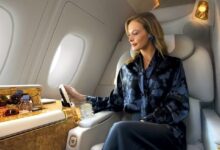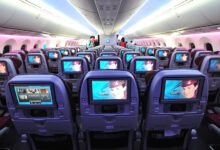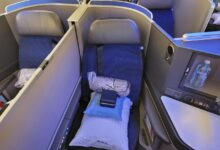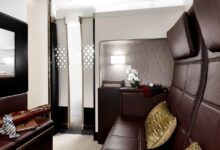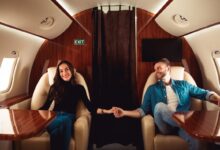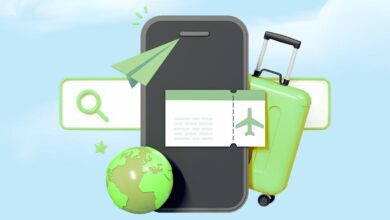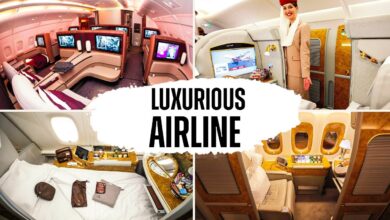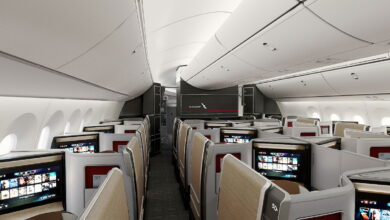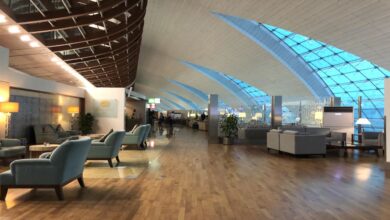How to Upgrade to a Luxury Flight for Less Money
How to upgrade to a luxury flight for less money is a question many travelers ponder. This guide unveils the secrets to transforming your next journey from economy to opulence without breaking the bank. We’ll explore various strategies, from leveraging frequent flyer miles and bidding on upgrades to negotiating directly with airlines and finding hidden deals. Prepare to discover how you can experience the unparalleled comfort and amenities of first or business class without the hefty price tag.
This exploration will cover multiple avenues for securing a luxury flight upgrade at a reduced cost. We will examine the differences between various luxury classes, detailing their respective amenities and price points. Furthermore, we’ll delve into practical strategies like utilizing points and miles, participating in upgrade auctions, and negotiating directly with airlines. We will also consider alternative approaches, such as purchasing add-ons to enhance your economy experience.
Understanding Luxury Flight Options
Upgrading to a luxury flight can significantly enhance your travel experience, but understanding the nuances of different classes is crucial for making an informed decision. This section details the distinctions between First Class, Business Class, and Premium Economy, highlighting the amenities and price variations to help you choose the best option for your needs and budget.
Luxury Flight Class Distinctions
Luxury air travel encompasses three primary classes: First Class, Business Class, and Premium Economy. Each offers a progressively enhanced experience compared to standard Economy class, with varying levels of comfort, service, and amenities. First Class represents the pinnacle of luxury, while Business Class provides a significant upgrade, and Premium Economy offers a noticeable step up from standard Economy.
Amenities and Services in Each Class
First Class typically provides the most extensive amenities, including lie-flat beds, private suites, gourmet dining with à la carte menus, access to exclusive airport lounges with premium amenities (spa treatments, showers, etc.), and significantly increased baggage allowance. Business Class usually features lie-flat or angled-flat seats, dedicated cabin service, improved meal service compared to Economy, and access to airport lounges, though the amenities may be less extensive than First Class.
Premium Economy offers larger seats with more legroom than Economy, enhanced meal service, priority boarding, and sometimes additional baggage allowance.
Price Differences Between Economy and Luxury Classes
The price difference between Economy and luxury classes can vary significantly depending on the airline, route, and time of year. As a general guideline, expect Business Class fares to be 2-4 times the cost of Economy, and First Class fares to be 4-8 times or even more, depending on the route and airline. For example, a round-trip Economy ticket from New York to London might cost $800, while the same flight in Business Class could range from $2000 to $4000, and in First Class from $4000 to $10000 or more.
These prices are estimates and can fluctuate greatly.
Comparison of Key Features Across Luxury Classes
The following table summarizes the key differences between Economy, Premium Economy, Business Class, and First Class across various airlines:
| Feature | Economy | Premium Economy | Business Class | First Class |
|---|---|---|---|---|
| Seat Size | Narrow, limited recline | Wider than Economy, more recline | Wider, lie-flat or angled-flat | Very wide, lie-flat bed, sometimes private suite |
| Meal Service | Basic meal and drinks | Improved meal options | Gourmet dining, à la carte menus | Gourmet dining, à la carte menus, extensive wine list |
| Lounge Access | None | Sometimes | Usually included | Always included, often with premium amenities |
| Baggage Allowance | Standard allowance | Increased allowance | Significantly increased allowance | Very generous allowance, often including special handling |
Finding Deals and Discounts on Luxury Flights: How To Upgrade To A Luxury Flight For Less Money
Securing a luxurious flight experience without breaking the bank is entirely achievable. By employing smart strategies and utilizing available resources, you can significantly reduce the cost of upgrading to premium cabins. This section Artikels effective methods for finding discounts and deals on luxury airfare.Finding the best deals requires a multifaceted approach, combining knowledge of specific websites and platforms with an understanding of booking strategies and loyalty programs.
Let’s explore the key avenues for securing discounted luxury travel.
Websites and Platforms Specializing in Discounted Luxury Airfare
Several websites and platforms specialize in offering discounted luxury airfare. These platforms often aggregate deals from various airlines and travel agencies, providing a centralized location to compare prices and find the best options. Examples include LuxuryEscapes, VeryFirstTo, and even some specialized sections on larger travel agencies like Expedia or Kayak. These platforms often feature exclusive deals and packages not readily available through direct airline bookings.
They may also offer bundled deals, including hotel stays and other amenities, which can further enhance value.
Strategies for Finding Last-Minute Deals and Promotions
Last-minute bookings can sometimes yield surprisingly good deals on luxury flights. Airlines frequently release unsold premium seats at discounted prices to fill planes. Websites like Scott’s Cheap Flights or The Flight Deal can send alerts for these opportunities. Flexibility with travel dates is key; being open to slightly adjusting your itinerary can unlock significant savings. Following airlines’ social media accounts and signing up for email newsletters can also provide advance notice of flash sales and promotions.
Advantages and Disadvantages of Using Flight Comparison Websites for Luxury Travel
Flight comparison websites offer a convenient way to compare prices from multiple airlines simultaneously. This allows for quick identification of the best deals. However, the results may not always encompass all available luxury options, particularly those offered through exclusive partnerships or private sales. Some websites may prioritize displaying less expensive options first, potentially obscuring more luxurious, yet potentially discounted, choices.
Therefore, it’s crucial to cross-reference the information obtained from comparison websites with direct airline booking platforms.
Loyalty Programs and Their Benefits for Upgrading to Luxury Seating, How to upgrade to a luxury flight for less money
Airline loyalty programs offer a powerful avenue for securing upgrades to luxury seating. Accumulating points through frequent flying or credit card spending can provide opportunities to redeem points for upgrades or even free luxury flights. Programs like American Airlines AAdvantage, United MileagePlus, and Delta SkyMiles often feature upgrade options as part of their reward structures. Furthermore, higher tier status within these programs often grants access to exclusive upgrade opportunities and priority boarding, enhancing the overall travel experience.
It’s important to note that the availability of upgrades depends on factors such as flight demand and the specific program’s terms and conditions.
Utilizing Points and Miles for Upgrades
Upgrading your flight using accumulated points and miles is a popular strategy for securing a more luxurious travel experience without significantly increasing your out-of-pocket expenses. Many frequent flyer programs and credit card reward systems allow you to leverage your earned points towards upgrades, transforming a standard economy or premium economy seat into a business or first-class experience. This method offers flexibility and potential cost savings, particularly for those who frequently travel and strategically accumulate points.Leveraging your existing points and miles for an upgrade is a relatively straightforward process, though the specifics vary depending on the airline and its loyalty program.
Understanding the nuances of your chosen program is key to maximizing your rewards. This includes knowing the point requirements for upgrades, the availability of upgrade options, and the potential limitations or restrictions.
Checking Point Balances and Initiating Upgrade Requests
To begin, you’ll need to access your frequent flyer account online or through the airline’s mobile application. Most programs have a clearly marked section displaying your current point balance. Once you’ve confirmed you have sufficient points, navigate to the section related to upgrades or award bookings. This usually involves selecting your desired flight, specifying your upgrade preference (e.g., from economy to business), and then initiating the upgrade request.
The system will automatically deduct the required points from your account upon successful processing of the request. If points are insufficient, you’ll be notified and given the option to either add more points or cancel the request. Some airlines may also allow you to pay a small co-pay in addition to points for upgrades, particularly during peak travel times or for highly sought-after routes.
Airline Program Point Requirements for Upgrades
Point requirements for upgrades vary considerably across different airline programs. For instance, a domestic upgrade from economy to business class on Airline A might require 10,000 points, while a similar upgrade on Airline B could demand 25,000 points. International upgrades, and upgrades to first class, will generally require significantly more points. Factors such as the flight distance, the time of year, and the level of demand also influence the number of points needed.
It is crucial to check the specific point requirements directly with the airline or through their loyalty program website before attempting an upgrade. These requirements are often dynamic and subject to change.
Credit Cards Offering Bonus Points for Air Travel
Several credit cards offer attractive rewards programs specifically designed to accrue points for air travel, which can then be used for upgrades or other travel-related expenses. These cards often come with various benefits, including travel insurance, airport lounge access, and priority boarding. However, it’s important to consider the annual fees and interest rates associated with these cards, weighing the benefits against potential costs.
For example, the “Platinum Rewards Card” might offer 2 bonus points per dollar spent on airfare, but it carries a $450 annual fee. Conversely, the “Travel Rewards Visa” might offer only 1.5 points per dollar, but with a much lower annual fee of $99. Careful comparison of different cards and their associated fees and benefits is essential before choosing one based on your spending habits and travel frequency.
Bidding for Upgrades
Airline upgrade auctions offer a compelling avenue to secure a luxurious flight experience at a potentially significant discount. This process, typically facilitated through the airline’s website or app, allows passengers to bid on available upgrades to premium cabins, such as business or first class, shortly before departure. Understanding the mechanics and influencing factors can dramatically improve your chances of success.Many factors influence the success rate of upgrade bids.
Essentially, it’s a supply and demand game. Higher demand for upgrades, particularly on popular routes or during peak travel seasons, will lead to increased competition and higher winning bids. Conversely, less popular flights or off-peak travel times may result in lower winning bids. The time of booking also plays a significant role; early bids, when inventory is higher, may be more successful, but may also mean bidding against more people.
Lastly, the class of service you are bidding from (e.g., from economy to business versus from premium economy to business) will also affect the likelihood of success and the price point.
Factors Influencing Upgrade Bid Success
Several key elements significantly impact the likelihood of a successful upgrade bid. Flight demand, as mentioned previously, is paramount. High demand routes, especially during peak travel periods like holidays or summer vacation, will naturally see more competitive bidding. The time of year significantly impacts the number of bids received. A flight during a less popular travel time might result in fewer bids, increasing your chance of winning at a lower price.
The specific day of the week can also matter; mid-week flights often have lower demand than weekend flights. Finally, the remaining upgrade inventory greatly affects your chances. If there are many seats available for upgrade, the bidding might be less aggressive.
Optimizing Upgrade Bids
To maximize your chances of a successful upgrade bid, careful planning and strategic bidding are crucial. Researching average winning bids for similar flights in the past can provide valuable insights into a realistic bidding range. Setting a maximum bid that you’re comfortable paying is essential to avoid overspending. Consider the value you place on the upgrade; the cost difference between economy and the upgraded class should factor into your decision.
Monitoring the auction closely and potentially adjusting your bid before the deadline can also be beneficial, especially if you see the winning bid is lower than your initial estimate. Finally, being flexible with your travel dates, if possible, can allow you to target flights with lower demand and thus lower winning bids.
Setting a Realistic Upgrade Budget
Establishing a realistic budget for upgrade bidding is vital to prevent overspending. Begin by determining the maximum amount you’re willing to pay for an upgrade. This should be based on the value you place on the enhanced comfort and amenities of the premium cabin, weighed against the cost of the original ticket. Compare this maximum bid with the average winning bids for similar flights to gauge the competitiveness of the auction.
If the average winning bid consistently exceeds your maximum, consider adjusting your expectations or targeting less popular flights. Remember, a successful bid should still represent a significant savings compared to purchasing the premium ticket outright. For example, if a business class ticket costs $2000 and an economy ticket costs $500, a successful upgrade bid of $700-$800 would still represent a considerable saving.
Negotiating Upgrades Directly with Airlines
Directly contacting an airline to negotiate an upgrade can be a surprisingly effective strategy for securing a luxurious travel experience at a reduced cost. While not guaranteed, this approach leverages the airline’s flexibility and potential for empty seats or last-minute adjustments to your advantage. It requires a polite yet assertive approach, focusing on the benefits to the airline as much as your personal desires.Negotiating an upgrade successfully involves a multi-step process.
First, you must identify the appropriate contact method and individual within the airline. This could range from a dedicated customer service line to a social media channel, depending on the airline and your personal preference. Following initial contact, clearly and concisely state your request for an upgrade, outlining your preferred flight and class. Finally, be prepared to engage in a negotiation, presenting your case persuasively and responding effectively to any counteroffers.
Contacting Airlines for Upgrade Negotiations
To initiate the upgrade negotiation, begin by identifying the most suitable contact method for the specific airline. Airlines typically provide multiple avenues for customer service, including phone numbers, email addresses, and social media accounts. Research the best option for your situation, considering factors such as response time and the complexity of your request. For example, a simple request might be handled effectively via email, whereas a more nuanced negotiation may benefit from a phone call.
Once you’ve chosen your contact method, prepare a concise and polite message outlining your request for an upgrade. Include your flight details (flight number, date, and passenger names), the desired upgrade class, and any relevant information, such as loyalty program membership.
Persuasive Arguments for Upgrade Requests
Your success in negotiating an upgrade hinges on presenting a compelling case that aligns with the airline’s interests. Highlighting the potential benefits to the airline, such as filling an otherwise empty seat, can significantly increase your chances of success. For instance, you might mention your willingness to pay a discounted upgrade fare, demonstrating your commitment to a mutually beneficial arrangement.
Another effective strategy is to emphasize your frequent flyer status or high spending with the airline, demonstrating your loyalty and value as a customer. If the flight is overbooked, you can politely point out that upgrading you would alleviate potential issues and ensure customer satisfaction.
Situations Favorable for Direct Negotiation
Direct negotiation is most likely to succeed in specific circumstances. Flights with empty seats in premium cabins present a prime opportunity for upgrade negotiations. Airlines are often more willing to offer upgrades when seats are unoccupied to maximize revenue. Similarly, overbooked flights can create a favorable environment for negotiations. By offering to upgrade, you may help the airline manage its passenger load effectively, reducing the likelihood of delays or disruptions.
Finally, last-minute flight changes or cancellations can sometimes lead to unexpected upgrade opportunities. Airlines might offer upgrades to compensate for inconveniences or to fill vacant seats on alternative flights.
Sample Script for Upgrade Request
Here’s an example of a phone call script:
“Hello, my name is [Your Name] and my booking reference is [Your Booking Reference]. I’m calling to inquire about the possibility of upgrading to [Upgrade Class] on flight [Flight Number] departing on [Date]. I understand that upgrades are subject to availability, but I’d be happy to discuss a discounted fare to ensure a mutually beneficial arrangement. I’m a [Frequent Flyer Status, if applicable] member and a frequent flyer with your airline. Thank you for your time and consideration.”
Here’s an example email:
Subject: Upgrade Request – Flight [Flight Number]
[Your Name]
Dear [Airline Customer Service],I am writing to inquire about the possibility of upgrading my flight, [Flight Number], departing on [Date], from [Origin] to [Destination]. My booking reference is [Your Booking Reference]. I am interested in upgrading to [Upgrade Class] and would be happy to discuss a potentially discounted fare. I am a [Frequent Flyer Status, if applicable] member and value my relationship with [Airline Name].
Thank you for your time and consideration.Sincerely,[Your Name][Your Contact Information]
Alternative Strategies for a Luxurious Flight Experience
Even without securing an upgrade to a premium cabin, you can significantly enhance your flight experience and create a more luxurious journey. Several strategies allow you to customize your travel to prioritize comfort and convenience, even in economy. By strategically combining these approaches, you can transform a standard flight into a more enjoyable and relaxing experience.
Premium Add-ons for Enhanced Comfort
Purchasing add-ons can elevate your economy flight experience without the cost of a full upgrade. These options provide access to amenities typically associated with business or first class, creating a more luxurious feel.
- Lounge Access: Many airlines and third-party providers offer lounge access passes. Lounges provide comfortable seating, complimentary food and drinks, Wi-Fi, and often quiet workspaces, offering a refuge from the bustling airport environment before your flight.
- Improved Meals: Pre-ordering special meals (vegetarian, vegan, gluten-free) often results in higher-quality meals than standard economy options. Some airlines also offer a premium meal service for an additional fee, providing a more sophisticated dining experience at altitude.
- Priority Boarding: Purchasing priority boarding allows you to board the plane earlier, securing overhead bin space for your luggage and ensuring you have ample time to settle in comfortably before takeoff.
Improving Economy Seat Comfort
Investing in a few key items can significantly improve your comfort in an economy seat. These relatively inexpensive additions can transform your travel experience, mitigating many of the discomforts associated with long-haul flights.
- Travel Pillows: A good quality neck pillow provides essential support, preventing neck strain during sleep. Consider a travel pillow designed to support both your neck and head.
- Noise-Canceling Headphones: Noise-canceling headphones significantly reduce engine noise and cabin chatter, creating a more peaceful and relaxing environment. This is particularly beneficial for long flights or those prone to being easily disturbed by noise.
- Compression Socks: Compression socks improve circulation, reducing swelling and discomfort in your legs and feet, especially helpful on longer flights.
Strategic Seat Selection
The location of your seat can dramatically impact your comfort and enjoyment. Choosing strategically can create a more pleasant and less stressful flight experience.
- Aisle Seats: Aisle seats offer easy access to the restroom and aisle, allowing for more movement during the flight. This is particularly beneficial for those who need to stretch their legs frequently.
- Window Seats: Window seats offer a view and can provide a sense of privacy, allowing for leaning against the window for added support. They are also preferable for those who want to sleep and avoid being disturbed by other passengers.
- Bulkhead Seats (Economy): Bulkhead seats often offer more legroom than standard economy seats, but may lack under-seat storage. This is a trade-off to consider, weighing extra legroom against potential inconvenience.
Visualizing the Experience
Imagine stepping into a world of unparalleled comfort and sophistication. A luxury flight transcends mere transportation; it’s an experience meticulously crafted to indulge your senses and elevate your journey to new heights. This section will paint a picture of what you can expect visually and sensorially during a luxury flight.The visual aspects of a luxury flight are designed to create a sense of calm and exclusivity.
Cabin Design and Seating
Luxury cabins often feature a more spacious and refined design than standard economy or even business class. Think plush, high-quality materials such as leather and suede adorning the seats and walls. The color palettes are typically muted and sophisticated, often incorporating calming earth tones or rich, deep hues. Seating arrangements are designed for maximum privacy and comfort. Instead of rows of closely packed seats, you might find lie-flat beds or spacious suites with individual compartments, offering a degree of seclusion and personal space rarely found in standard air travel.
Some luxury cabins even feature private suites with closing doors, providing a sanctuary away from the bustle of the main cabin. The overall aesthetic aims for a feeling of understated elegance and quiet luxury.
In-Flight Entertainment Options
Beyond the comfortable seating, the in-flight entertainment systems in luxury cabins are typically state-of-the-art. Expect large, high-definition personal screens offering a vast library of movies, television shows, music, and games. Noise-canceling headphones are often provided to enhance the viewing experience and block out any ambient noise. Some airlines even offer personalized entertainment experiences, allowing passengers to curate their own playlists or select movies based on their preferences.
The aim is to provide a seamless and immersive entertainment experience that complements the overall luxury of the flight.
Sensory Experience
The sensory experience of a luxury flight is just as important as the visual aspects.
Smells
The air in a luxury cabin is often subtly scented with calming and refreshing aromas. These scents are carefully chosen to be unobtrusive yet pleasant, creating a relaxing atmosphere. Imagine the subtle fragrance of lavender or a hint of citrus, designed to enhance the feeling of tranquility and well-being.
Sounds
The soundscape of a luxury flight is carefully managed to minimize distractions and maximize relaxation. Noise-canceling technology is often employed to reduce the sound of the engines and other ambient noises. Instead, you might hear soothing background music or the gentle hum of the air conditioning system, contributing to an overall sense of peace and quiet.
Textures
The tactile experience is also a key component of the luxury flight experience. Imagine sinking into the plush, soft leather of your seat, feeling the smooth, cool surface of a champagne flute, or the soft texture of a luxurious blanket provided for added comfort. These carefully selected textures contribute to an overall sense of opulence and comfort. The attention to detail extends to every element, from the softness of the towels in the lavatory to the weight and feel of the cutlery.
Summary
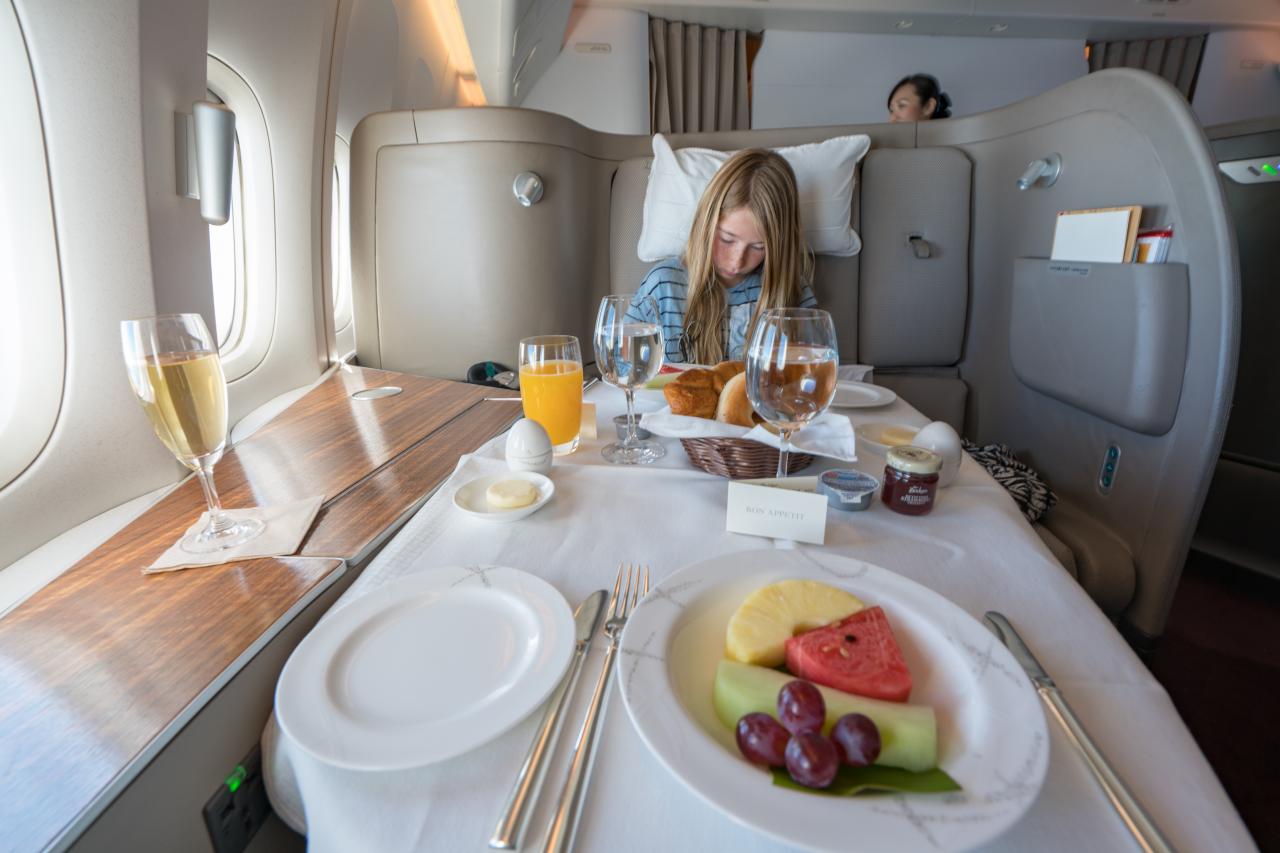
Source: lajollamom.com
Ultimately, upgrading to a luxury flight for less money is achievable through strategic planning and a proactive approach. By understanding the various upgrade options, diligently searching for deals, and effectively utilizing loyalty programs and points, you can significantly increase your chances of experiencing the premium comfort and service of a luxury flight without exceeding your budget. Remember, a little research and initiative can go a long way in transforming your next flight into a truly memorable experience.
Essential FAQs
Can I upgrade at the gate?
Yes, sometimes airlines offer upgrades at the gate, particularly if there are empty seats in higher classes. However, these are often more expensive than pre-booked upgrades.
What if my flight is fully booked?
Fully booked flights reduce upgrade opportunities. Your chances are higher on less popular routes or during off-peak travel times.
Are there any risks associated with bidding for upgrades?
Yes, there’s a risk your bid may be unsuccessful. Set a realistic budget to avoid disappointment. Also, note that some airlines don’t offer refunds if your bid is rejected.
How far in advance should I start looking for upgrade deals?
The earlier you start searching, the better your chances. Deals and promotions often appear months before the flight date. However, last-minute deals can also materialize.
What’s the best way to contact an airline for a direct upgrade negotiation?
Call their customer service line directly. Emails are acceptable, but a phone call often provides a more immediate and personalized response.

